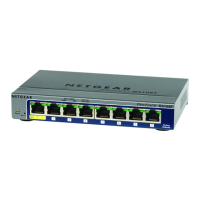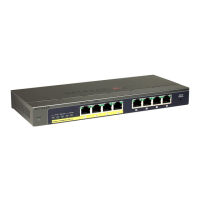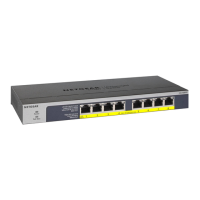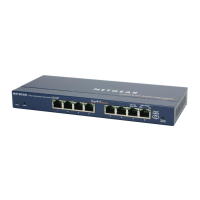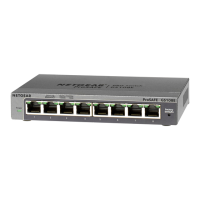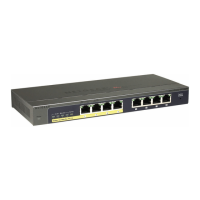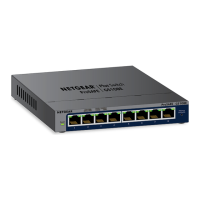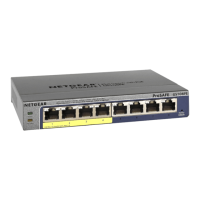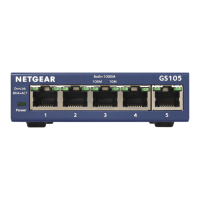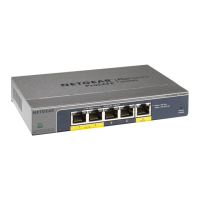GS108T and GS110TP Smart Switch Software Administration Manual
Configuring Switching Information 3-5
v1.0, April 2010
Link Aggregation Groups
Link aggregation groups (LAGs), which are also known as port-channels, allow you to combine
multiple full-duplex Ethernet links into a single logical link. Network devices treat the aggregation
as if it were a single link, which increases fault tolerance and provides load sharing. You assign the
LAG VLAN membership after you create a LAG. The LAG by default becomes a member of the
management VLAN.
A LAG interface can be either static or dynamic, but not both. All members of a LAG must
participate in the same protocols. A static port-channel interface does not require a partner system
to be able to aggregate its member ports.
Static LAGs are supported. When a port is added to a LAG as a static member, it neither transmits
nor receives LAGPDUs. The GS108T and GS110TP Smart Switches each support four LAGs.
From the LAGs link, you can access the following pages:
• “LAG Configuration” on page 3-5
• “LAG Membership” on page 3-7
• “LACP Configuration” on page 3-8
• “LACP Port Configuration” on page 3-9
LAG Configuration
Use the LAG (Port Channel) Configuration page to group one or more full-duplex Ethernet links
to be aggregated together to form a link aggregation group, which is also known as a port-channel.
The switch treats the LAG as if it were a single link.
To access the LAG Configuration page, click Switching LAG Basic LAG Configuration.
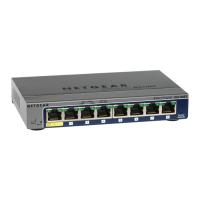
